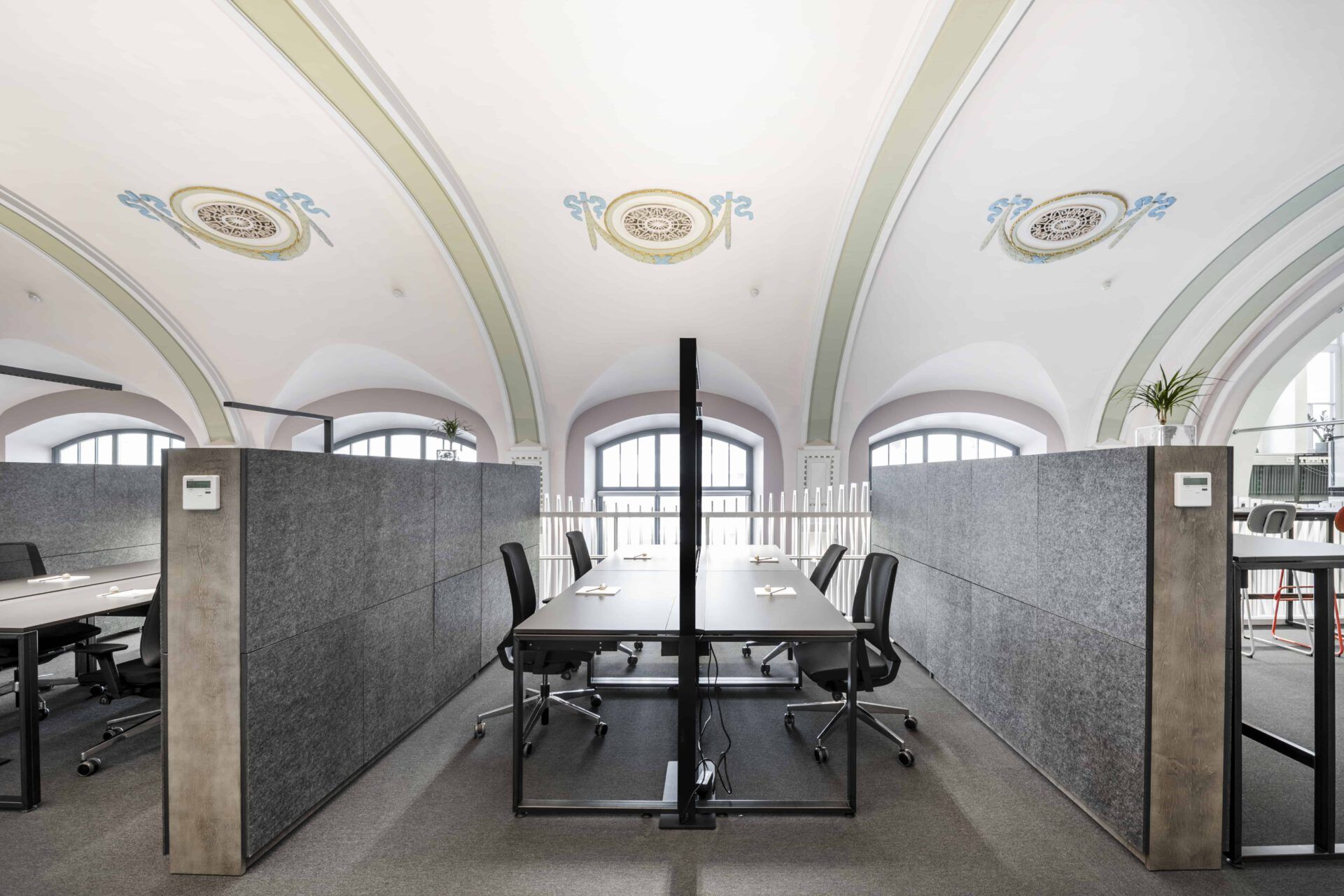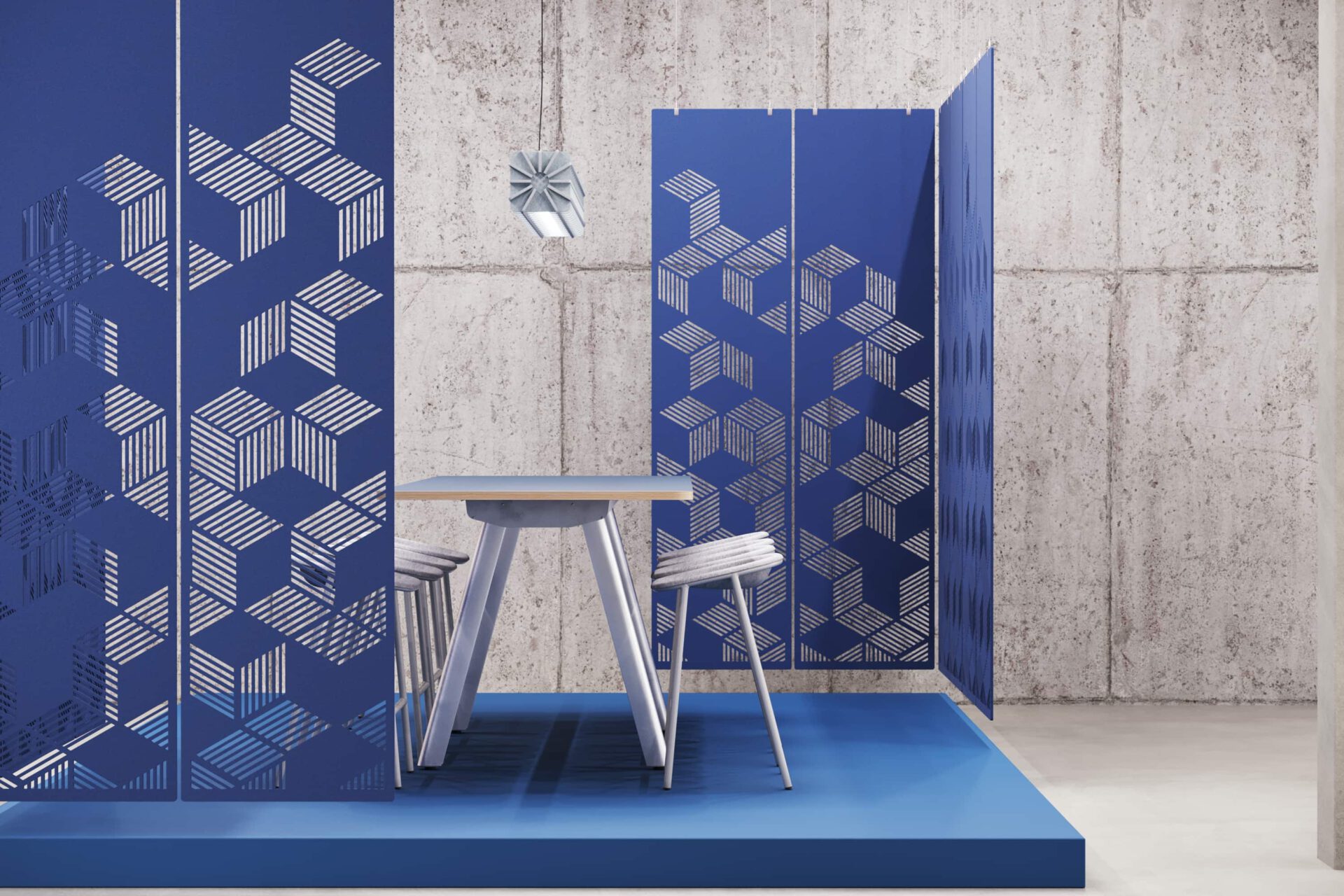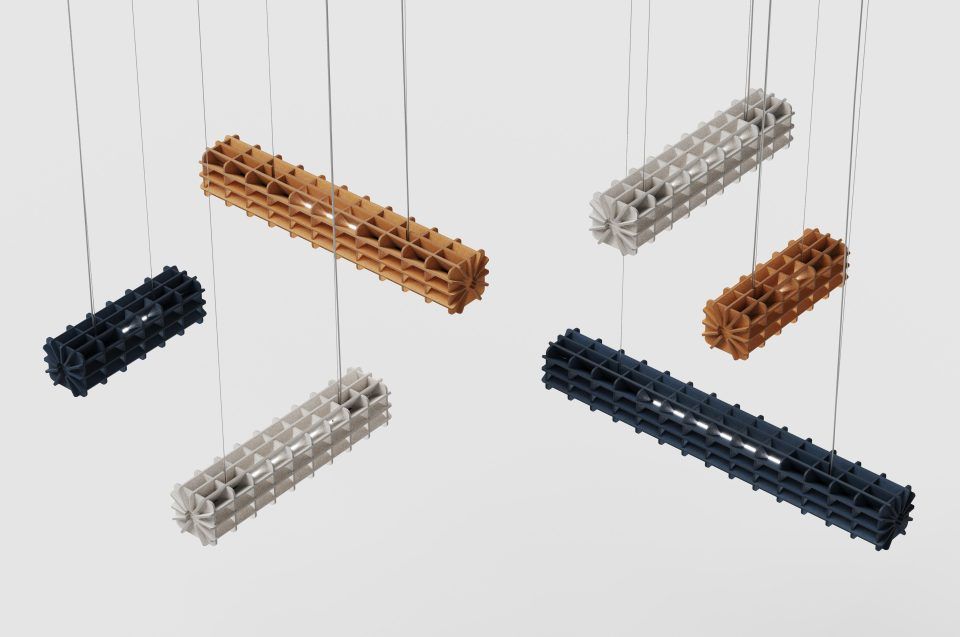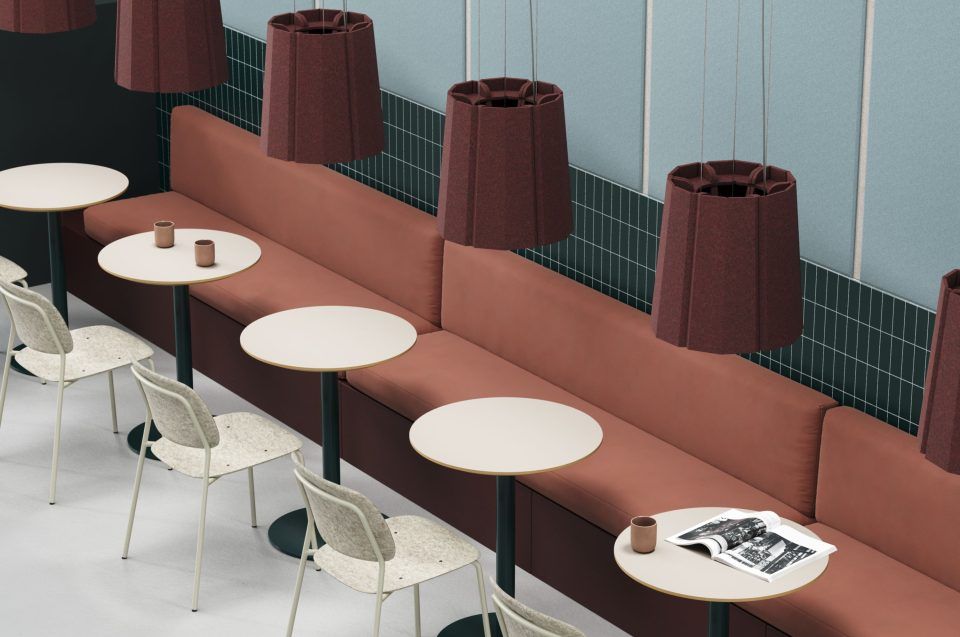- No results. Please try again.
5 tips to limit noise pollution in the office
Open offices with flexible workstations are still the trend. In fact, there’s a good chance you’re reading this article in such a space. Although these open spaces are cosy and ideal for connecting with colleagues, they also present some challenges.
Research has shown that 70% of employees suffer from noise in the office. Noise nuisance from calling or eating colleagues, ringing telephones and noisy devices can be quite distracting. Fortunately, there is something that can be done with it – here are a few handy tips.

How does noise nuisance in the office arise?
Sound moves in waves through a space. If the room is bare and open, the sound is not being absorbed or stopped, but bounces back from hard surfaces back into the room. When this continues to happen, you get reverberation and sound becomes noise.
Many offices today consist of bare surfaces. Lots of glass, exposed walls, hard floors and open ceilings. That looks good, but it is disastrous for your acoustics. Sound continues to bounce off and creates excessive noise nuisance in the office.
How do you limit noise pollution in the office?
Although there is no one solution that works in all situations, as a rule of thumb you can keep 1/3 of the office area needs to be covered with acoustic material for a positive effect. This applies to 1/3 of the surface of the floor, walls and ceiling together. This will give you the fastest result.
It also helps to isolate sound sources. For example, consider placing printers or noisy coffee machines in a separate room or acoustic screens around desks. You then capture the sound at the source. So here are 5 tips to limit noise pollution in the office.

5 tips to limit noise pollution in the office
- Curtains help to improve the acoustics. Roller blinds also work. This prevents reflections from the windows.
- Acoustic shingles on the wall also help. The overlap creates an extra acoustic effect. An extra space between the wall and the shingle further enhances this effect.
- Carpets muffle and absorb sounds. An additional advantage is that your heels and walking get less noisy.
- EasyAcoustics are ready-to-use wall tiles, where you no longer need to build a frame for the ideal space in between. You hang them directly on the wall and notice the difference immediately.
- Acoustic baffles on the ceiling also work wonders. An additional advantage is that you can isolate local noise. The sound is trapped directly above the source.
With all these tips, you have to remember that you have to cover large parts of the surface with sound-absorbing material.
Some popular acoustic measures that don’t work (so well)
Then there are a few measures that you often encounter, but which actually have little or no effect on the acoustics:
- Plants are often used and they do have some effect on the acoustics. But you have to put a lot of it down. A plant wall does work well on the acoustics.
- Covering the underside of tables with foam rubber has no effect.

